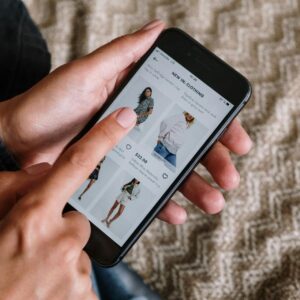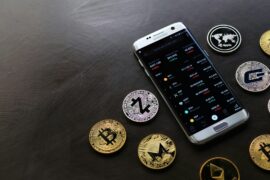This article may contain references to products or services from one or more of our advertisers or partners. We may receive compensation when you click on links to those products or services. Nonetheless, our opinions are our own.
The world of blockchain technology and cryptocurrencies is vast, complex, and ever-evolving. One of the most intriguing aspects of this digital landscape is the Ethereum Mempool from https://rpcfast.com/mempool-data-stream. This concept may be alien to many, but it holds the key to understanding how transactions occur in the Ethereum network. This comprehensive guide will navigate the Ethereum seas, taking a deep dive into the Mempool, its functionalities, and its influence on user experience.
- Mempool Fundamentals: Understanding the Core Concepts and Functions in Ethereum
- Real-time Dynamics: Navigating the Ever-Changing Landscape of the Ethereum Mempool
- Transaction Lifecycle: A Comprehensive Exploration of Transactions from Pending to Confirmed
- Optimizing User Experience: Strategies for Efficiently Navigating the Ethereum Mempool
- Recommended Reads
Mempool Fundamentals: Understanding the Core Concepts and Functions in Ethereum
The Ethereum Mempool is a pool of pending transactions. These transactions are yet to be picked up by miners and included in a block. Each Ethereum node hosts its own version of the Mempool, and these can vary slightly depending on the specific transactions a node has received. The transactions remain in the Mempool until they are either confirmed and added to a block or dropped due to being replaced or expired.
The Mempool plays a crucial role in determining transaction fees. When a user submits a transaction, they can specify a gas price. This price is essentially a bid that they’re willing to pay to have their transaction processed. Miners, then, choose transactions with the highest gas prices from the Mempool to process first, as these will earn them the most rewards. This dynamic creates a marketplace for transaction processing, with the Mempool serving as the central hub.
The size and state of the Mempool can also provide valuable insights into the Ethereum network’s current status. For example, a growing Mempool could indicate increased network activity, potentially signaling an upcoming price movement. Conversely, a shrinking Mempool might suggest a decrease in network usage, which could lead to lower transaction fees.
The Ethereum Mempool is a dynamic entity, constantly changing as new transactions are added and old ones are confirmed or dropped. This ever-changing landscape can be challenging to navigate, especially for users looking to optimize their transactions’ speed and cost.
One important aspect of the Mempool’s dynamics is the concept of transaction replacement. If a transaction has been sitting in the Mempool for a while without being confirmed, the sender can choose to “replace” it by sending another transaction with the same nonce but a higher gas price. This incentivizes miners to pick up the new transaction and leave the old one behind.
Another key dynamic is the influence of network congestion on transaction fees. As the Mempool fills up, competition for block space increases, driving up gas prices. Conversely, when the Mempool is relatively empty, transaction fees tend to decrease. Understanding these dynamics can help users time their transactions to minimize costs and maximize speed.
Transaction Lifecycle: A Comprehensive Exploration of Transactions from Pending to Confirmed
Each transaction in the Ethereum network undergoes a lifecycle from inception to confirmation. This lifecycle begins when a user initiates a transaction, assigning it a gas price and a nonce (a number used once). The transaction then enters the Mempool, where it waits to be picked up by a miner.
While in the Mempool, the transaction’s status is “pending.” It remains in this state until a miner includes it in a block. At this point, the transaction’s status changes to “confirmed,” and it is considered part of the Ethereum blockchain. However, there’s a chance that the block containing the transaction could become “orphaned” if another chain becomes the longest chain in the network. In this case, the transaction reverts to “pending” status and returns to the Mempool.
Understanding this lifecycle is essential for accurately interpreting Mempool data and predicting transaction confirmation times. By monitoring the Mempool and the state of pending transactions, users can gain insights into network congestion and transaction fees.
The final step in our deep dive into the Ethereum Mempool is learning how to optimize the user experience. With a solid understanding of Mempool fundamentals and dynamics, users can employ strategies to navigate the Ethereum seas more efficiently.
Firstly, users can adjust their gas prices based on network congestion. When the Mempool is crowded, setting a higher gas price can increase the chances of a transaction being picked up quickly. Conversely, when the Mempool is less congested, users can potentially save on transaction costs by lowering their gas price.
Secondly, users can leverage transaction replacement to manage pending transactions. If a transaction is not being confirmed quickly enough, the user can send a new transaction with the same nonce and a higher gas price to replace it.
In conclusion, the Ethereum Mempool is a fascinating and complex component of the Ethereum network. By understanding its fundamentals, dynamics, and transaction lifecycle, users can navigate the Ethereum seas more efficiently and optimize their experience. Whether you’re a seasoned Ethereum sailor or a newcomer just dipping your toes into these waters, hopefully, this guide has shed some light on the intriguing world of the Ethereum Mempool.

Reviewed and edited by Albert Fang.
See a typo or want to suggest an edit/revision to the content? Use the contact us form to provide feedback.
At FangWallet, we value editorial integrity and open collaboration in curating quality content for readers to enjoy. Much appreciated for the assist.
Did you like our article and find it insightful? We encourage sharing the article link with family and friends to benefit as well - better yet, sharing on social media. Thank you for the support! 🍉
Article Title: Navigating the Ethereum Seas: A Deep Dive into the Mempool
https://fangwallet.com/2024/02/16/navigating-the-ethereum-seas-a-deep-dive-into-the-mempool/The FangWallet Promise
FangWallet is an editorially independent resource - founded on breaking down challenging financial concepts for anyone to understand since 2014. While we adhere to editorial integrity, note that this post may contain references to products from our partners.
The FangWallet promise is always to have your best interest in mind and be transparent and honest about the financial picture.
Become an Insider

Subscribe to get a free daily budget planner printable to help get your money on track!
Make passive money the right way. No spam.
Editorial Disclaimer: The editorial content on this page is not provided by any of the companies mentioned. The opinions expressed here are the author's alone.
The content of this website is for informational purposes only and does not represent investment advice, or an offer or solicitation to buy or sell any security, investment, or product. Investors are encouraged to do their own due diligence, and, if necessary, consult professional advising before making any investment decisions. Investing involves a high degree of risk, and financial losses may occur including the potential loss of principal.
Source Citation References:
+ Inspo










































